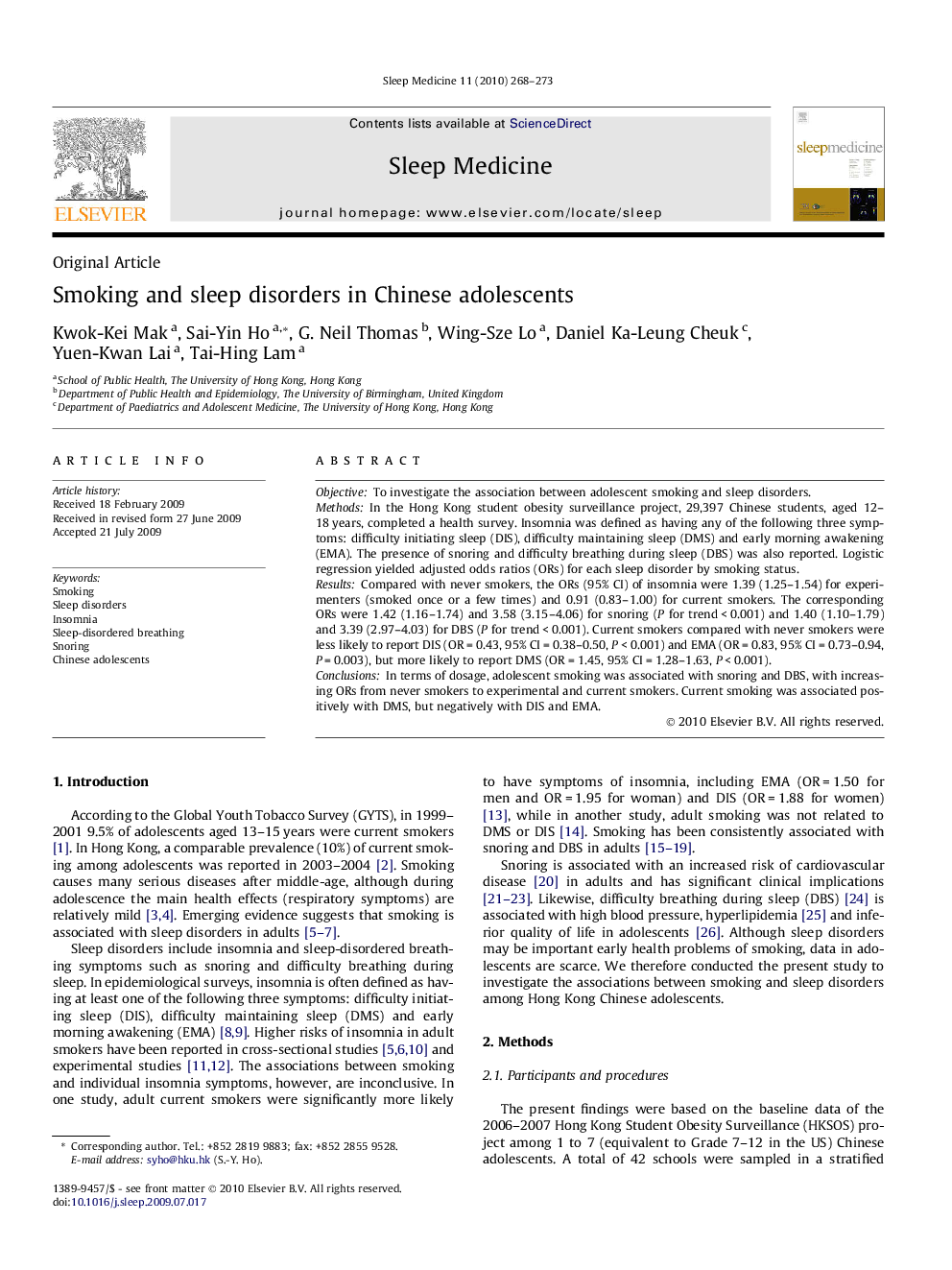| Article ID | Journal | Published Year | Pages | File Type |
|---|---|---|---|---|
| 3177083 | Sleep Medicine | 2010 | 6 Pages |
ObjectiveTo investigate the association between adolescent smoking and sleep disorders.MethodsIn the Hong Kong student obesity surveillance project, 29,397 Chinese students, aged 12–18 years, completed a health survey. Insomnia was defined as having any of the following three symptoms: difficulty initiating sleep (DIS), difficulty maintaining sleep (DMS) and early morning awakening (EMA). The presence of snoring and difficulty breathing during sleep (DBS) was also reported. Logistic regression yielded adjusted odds ratios (ORs) for each sleep disorder by smoking status.ResultsCompared with never smokers, the ORs (95% CI) of insomnia were 1.39 (1.25–1.54) for experimenters (smoked once or a few times) and 0.91 (0.83–1.00) for current smokers. The corresponding ORs were 1.42 (1.16–1.74) and 3.58 (3.15–4.06) for snoring (P for trend < 0.001) and 1.40 (1.10–1.79) and 3.39 (2.97–4.03) for DBS (P for trend < 0.001). Current smokers compared with never smokers were less likely to report DIS (OR = 0.43, 95% CI = 0.38–0.50, P < 0.001) and EMA (OR = 0.83, 95% CI = 0.73–0.94, P = 0.003), but more likely to report DMS (OR = 1.45, 95% CI = 1.28–1.63, P < 0.001).ConclusionsIn terms of dosage, adolescent smoking was associated with snoring and DBS, with increasing ORs from never smokers to experimental and current smokers. Current smoking was associated positively with DMS, but negatively with DIS and EMA.
